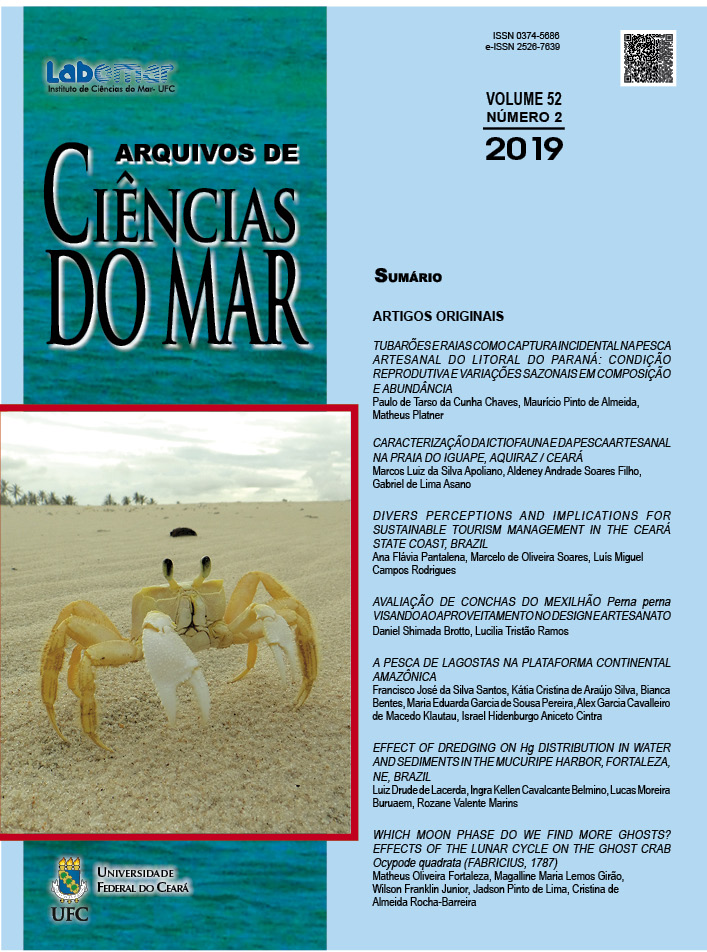WHICH MOON PHASE DO WE FIND MORE GHOSTS? EFFECTS OF THE LUNAR CYCLE ON THE GHOST CRAB Ocypode quadrata (FABRICIUS, 1787)
DOI:
https://doi.org/10.32360/acmar.v52i2.42737Abstract
The ghost crab Ocypode quadrata is commonly found in the middle and supralittoral areas of sandy beaches along the Brazilian coast. It is a known and important species in the ecology of beaches, which inhabit semi-permanent burrows excavated, maintained, and protected by them. This study evaluated the density and diameter of O. quadrata burrows, considering three lunar cycles in a Conservation Unit on the coast of Ceará state, Northeastern Brazil. Quarterly samplings were performed between 2014 and 2015 during the early morning in the four phases of the moon over three lunar cycles. The tidal range (high tide and low tide) and nocturnal luminosity were used to evaluate the effects of the lunar phases on crab behavior. The lunar cycles influence the activity of the O. quadrata, varying the density, diameter, and distribution of the burrows along the beach, due to changes in the tide conditions and nocturnal luminosity. The construction of burrows by the crabs was higher in the moons that provided more bright nights.
Keywords: ghost crab, burrows, Canto Verde beach, phases of the moon.
Downloads
Published
Issue
Section
License
1. Proposta de Política para Periódicos de Acesso Livre
Autores que publicam nesta revista concordam com os seguintes termos:
- Autores mantém os direitos autorais e concedem à revista o direito de primeira publicação, com o trabalho simultaneamente licenciado sob a Licença Creative Commons Attribution que permite o compartilhamento do trabalho com reconhecimento da autoria e publicação inicial nesta revista.
- Autores têm autorização para assumir contratos adicionais separadamente, para distribuição não-exclusiva da versão do trabalho publicada nesta revista (ex.: publicar em repositório institucional ou como capítulo de livro), com reconhecimento de autoria e publicação inicial nesta revista.
- Autores têm permissão e são estimulados a publicar e distribuir seu trabalho online (ex.: em repositórios institucionais ou na sua página pessoal) a qualquer ponto antes ou durante o processo editorial, já que isso pode gerar alterações produtivas, bem como aumentar o impacto e a citação do trabalho publicado (Veja O Efeito do Acesso Livre).

